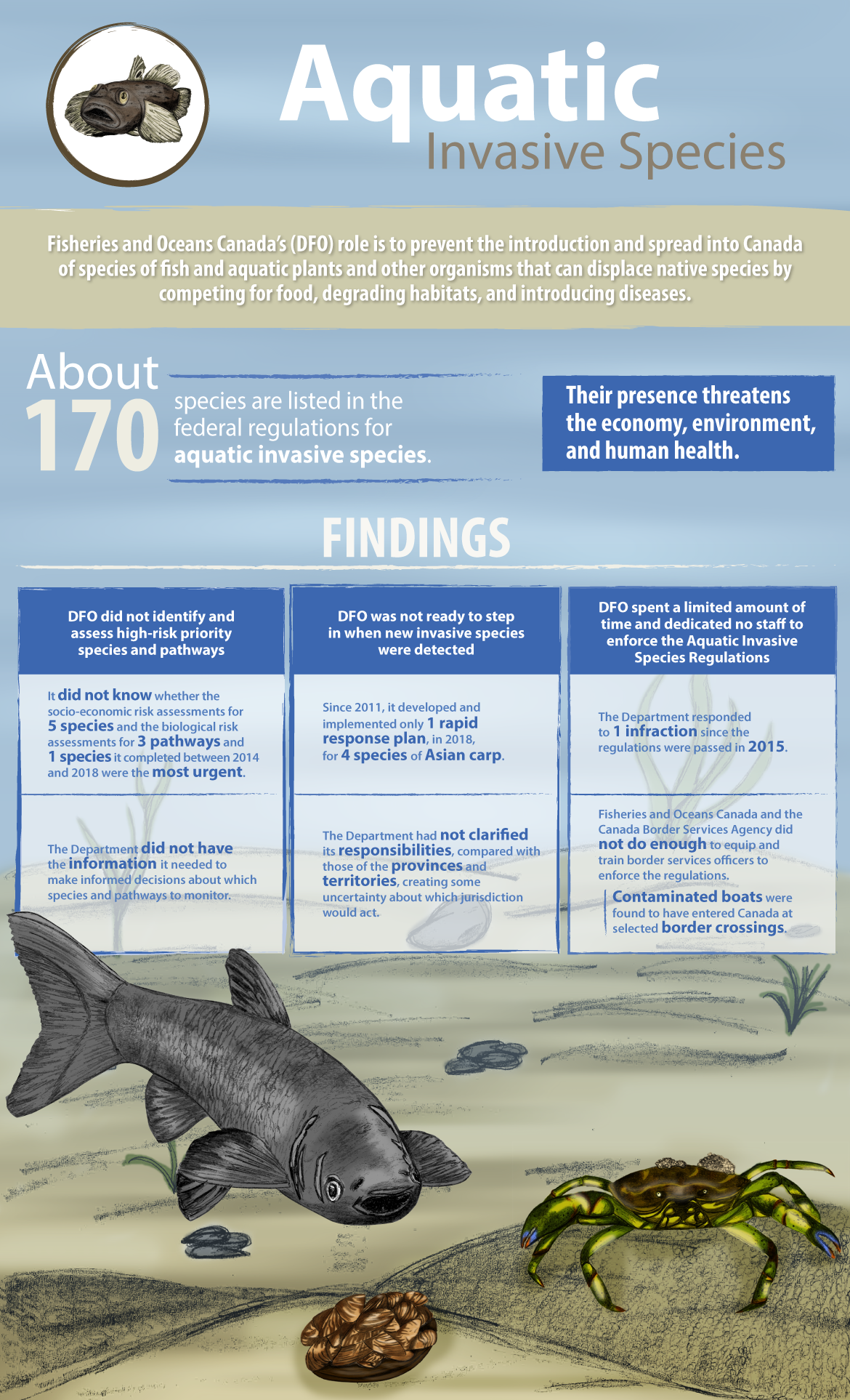Report 1—Aquatic Invasive Species
At a Glance Report 1—Aquatic Invasive Species
What we examined (see Focus of the audit)
This audit focused on whether Fisheries and Oceans Canada and the Canada Border Services Agency implemented adequate measures to prevent aquatic invasive species from becoming established in Canadian waters. We examined the organizations’ activities to prevent introductions, to detect and respond to invasions, and to prevent the spread of aquatic invasive species.
Why we did this audit
This audit is important because aquatic invasive species can devastate biodiversity and ecosystem functions. These species can compete aggressively with native species for food and survival, harming fish, fish habitat, and fisheries. This can have negative impacts on the communities and Indigenous peoples that depend on these resources. Along with damaging infrastructure, aquatic invasive species can foul beaches and ruin sport fishing, affecting tourism and local economies.
Overall message
Overall, we found that Fisheries and Oceans Canada and the Canada Border Services Agency had not taken the steps required to prevent invasive species, such as the zebra mussel, green crab, and tunicates, from becoming established in Canada’s waters despite commitments to do so over the years. Fisheries and Oceans Canada had not determined which species and pathways posed the greatest threats to Canada’s environment and economy and to human health and activities, and it had not determined which species were the most important to regulate.
Fisheries and Oceans Canada had, however, taken significant action to prevent Asian carp species from becoming established in the Great Lakes, and in 2017, the Department received additional funding to deal with aquatic invasive species.
We also found that Fisheries and Oceans Canada did not distinguish its responsibilities with regard to aquatic invasive species from those of the provinces and territories. Not knowing who should do what creates uncertainty about which jurisdiction should respond when new invasive species are detected. As well, the Aquatic Invasive Species Regulations were not adequately enforced, partly because of the Department’s and the Agency’s shortcomings in equipping and training fishery officers and border services officers with the means to prevent aquatic invasive species from entering Canada.
What we found about …
Assessing the risks posed by aquatic invasive species
Preventing aquatic invasive species from becoming established
Entity Responses to Recommendations
The audited entities agree with our recommendations and have responded (see List of Recommendations).
Related Information
| Report of the | Commissioner of the Environment and Sustainable Development |
|---|---|
| Type of product | Performance audit |
| Topics | |
| Entities | |
| Completion date | 28 December 2018 |
| Tabling date | 2 April 2019 |
| Related audits |
|
For more information
Media Relations
Telephone: 1-888-761-5953
Email: infomedia@oag-bvg.gc.ca
Twitter: OAG_BVG
